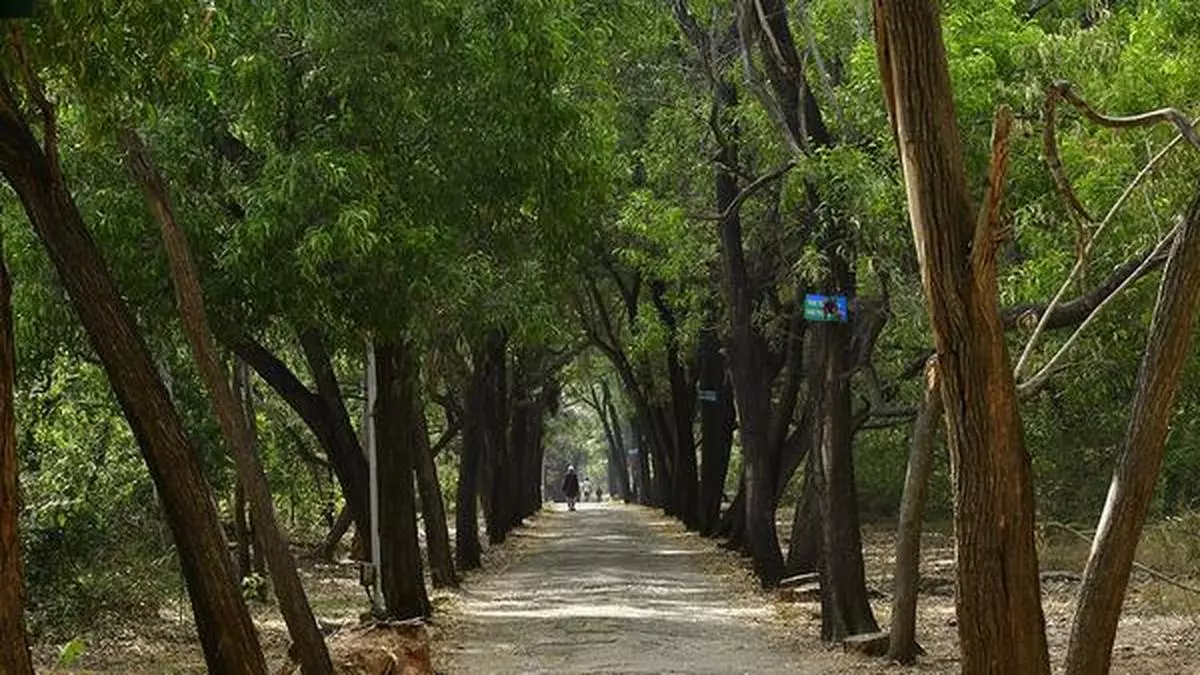Transforming agriculture with agroforestry to combat climate change
With the global population around 8 billion, more human beings live on our planet presently than in any point of time in history. It is certainly a remarkable story on how homo sapiens, this one species, has dominated Earth. We can pat our backs for being the most innovative and inventive creatures.
At the same time, we are also exploiting the earth’s resources at a scale that is unprecedented in history. Modern inventions have brought to us marvels like the internet, cellular communication and means of transport that make the planet look small.
Yet it is also taking a toll on the earth’s health. The growth of the human population on Earth has come simultaneously with a decline in its forest cover. Probably, there are fewer trees on the planet at present than at any point in time in its history. And climate change is just a symptom of the health of our planet.
Changing weather patterns, severe heat waves and unprecedented rains and turbulence have become a constant reminder that more needs to be done to keep the planet green. Replenishing the earth’s resources is now a necessity. It is a requirement for survival.
Industry’s role
I am of the firm opinion that business is the art of creating win-win situations. The entrepreneur who can create a profit by exploiting man or nature needs a serious rethink. Business in this new age is not just about profit, it is also about sustainability. In my experience, even customers value those brands more than care for nature.
Often, solutions are just a matter of will. As mentioned earlier, one of the crises that we are dealing with is the declining tree and forest cover. The solution to this vital issue is rather simple. Agriculture needs to transform towards agroforestry. Farmers are people who work closely with nature. Now, there is an urgent need for farming is done not just to enjoy the fruits of nature but also to nurture it.
According to some estimates, agriculture contributes almost 30 per cent of global greenhouse gas (GHG) emissions and drives 80 per cent of tropical deforestation. Monoculture farm practices are the major reason for a significant reduction in the tree cover. The role of agro-forestry in this domain cannot be overemphasized.
Strengthening the lungs of the planet
Though it may seem a bit distant now, we have just emerged from one of the most difficult crises that humanity has ever faced. Covid-19, in its dark way, pointed to the importance of our lungs.
A germane question here is are we paying the same attention to the lungs of our planet? Development aspects will continue to put pressure of our forest areas. Naturally, the best way to counter it is mainstreaming agroforestry.
Not only can it become the largest single factor towards countering climate change, it will also be effective in bringing newer economic options for the tillers. Planting of native trees on working agricultural lands can sequester carbon and reduce emissions.
It also has additional benefits. Agroforestry, if implemented effectively, can also enhance soil fertility. It can also provide shade both to crops as well as livestock. Agroforestry products can provide additional streams of income to the farmers.
Trees help in stabilising climate and also protect from extreme heat and weather events. In addition, agroforestry also creates habitats for wildlife, thus strengthening the flora and fauna ecosystems.
Need for greater research
Global bodies like the UN have also repeatedly emphasised on the importance of agroforestry in combating pollution and environmental change.
A report released last year by the Economic and Social Affairs Department of the UN underlined the important role played by agroforestry.
“By helping to transform conventional agriculture, a source of massive deforestation, into sustainable agriculture, agroforestry reduces the pressure on forests. It thus indirectly contributes to their protection,” it had said.
The Indian government has also been making attempts to promote agroforestry. According to the Indian Council for Agricultural Research (ICAR) report, agroforestry can offset 22.41 t CO2 from total CO2 equivalent GHG emission (1831.64 million tonnes), which is 1.63% of the total GHG emission.
The government has been promoting various agroforestry models including teak-based, bamboo-based, Kapok and peach-based models for the diverse climatic zones of the country.
It is important for government, industry, global bodies like the UN and social sector to come together in creating a strong environment towards agroforestry that would create a sustainable and win-win story for our planet.
Green Social Responsibility
The industry must lead the change towards more sustainable products. Industry and businesses require raw materials and natural resources. We must replenish them. Businesses that fail to do so, do not create value. Rather they create negative value.
As we observe World Environment Day, it is time for all of us to take a green pledge. India is moving with a new government and it is time for new developments.
We have covered some distance in bring the Corporate Social Responsibility structure to the fore. It is now quintessential for the benefit of humanity, for all of us, especially the industry, to find ways to strengthen our Green Social Responsibility. And Agroforestry to counter climate change should be on top of that list.
The author is Executive Director – Rushil Decor Ltd. Views are personal
